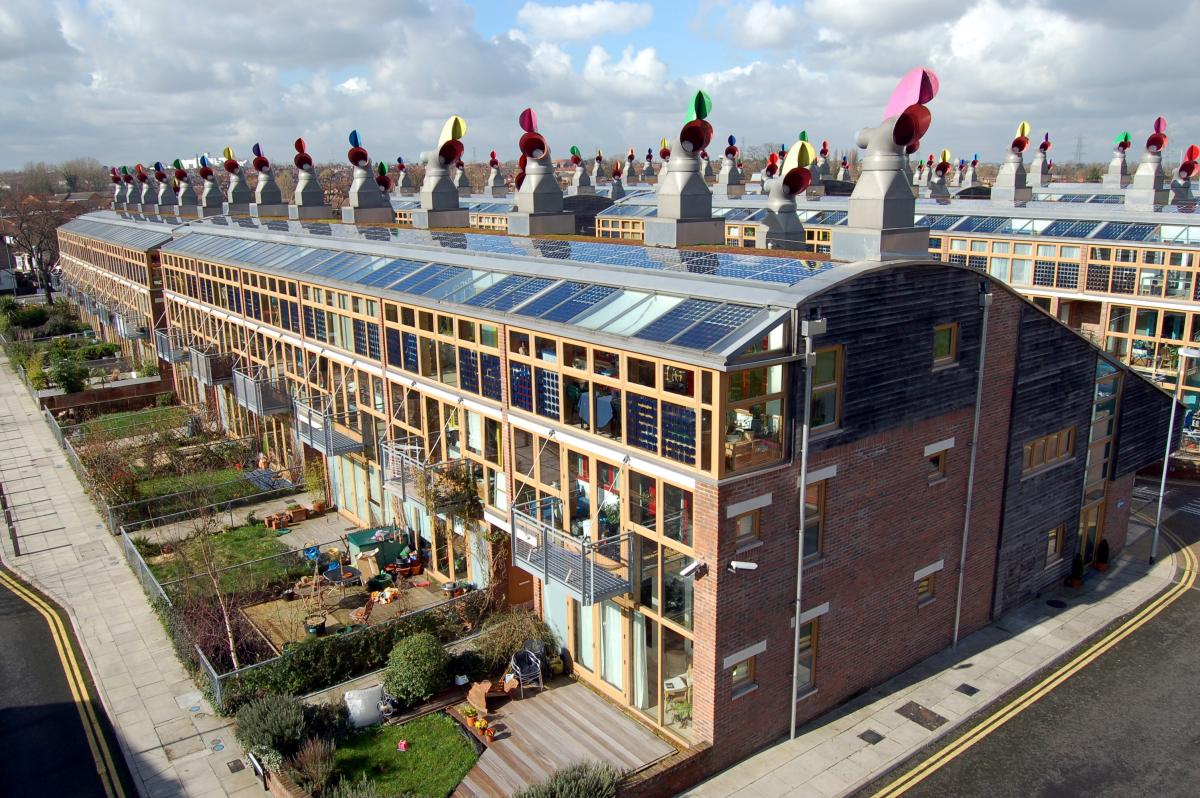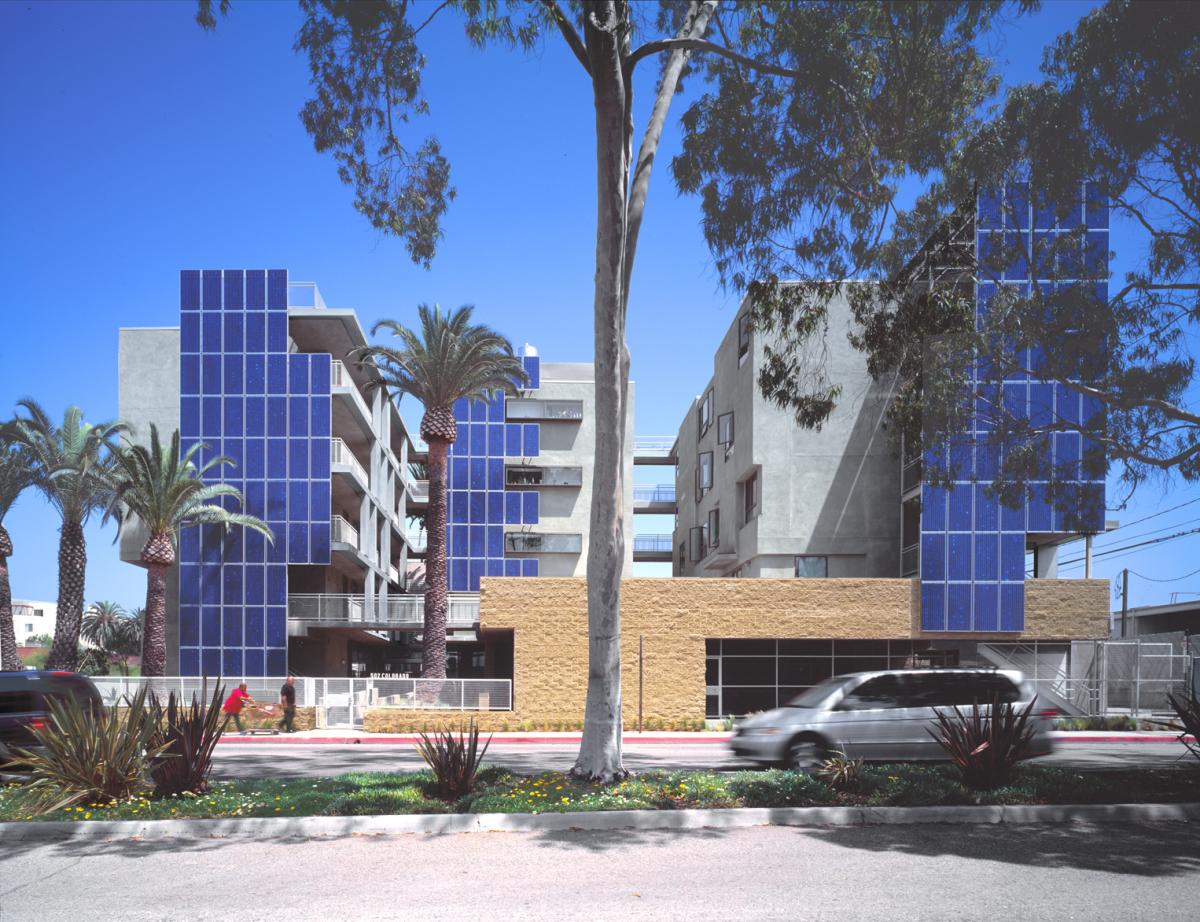Solving the Sustainable Global Housing Problem
by Emma Kantrowitz
CBRE Blueprint | A View from the Top
In the suburb of Hackbridge in South West London, a sustainable social housing movement is taking place. BedZED, the U.K.’s first large-scale “eco-village,” is leading the way in the global movement to improve sustainable social housing offerings.
Completed and occupied in 2002, the Beddington Zero Energy Development (BedZED) is a mixed-use property comprised of 100 homes and apartments, offices, a college and community amenities. Not only does the property offer different-sized homes available to rent or buy—providing housing for different needs—it was also built to emit zero fossil fuels, and is integrated into the surrounding area, providing residents with ample employment and economic opportunity. In all, it is a prime example of the type of sustainable social housing projects that need to be implemented throughout the world. But, to solve the encroaching global affordable housing problem, there is still a long way to go.
“In the period to 2030, almost all of the word’s total population increase will take place in urban areas, with rural areas being static,” notes CBRE global chief economist Richard Barkham, who authored a study for the Chinese Policy Studies Institute titled Sustainable Social Housing: An Examination of Global Best Practice. “Finding housing solutions for this expansion of cities is essential to avoid the problems of lack of affordability, or ramshackle and poor quality development, or both.”
THREE TYPES OF HOUSING SUSTAINABILITY
Sustainability doesn’t only pertain to environmental factors; in terms of affordable housing, sustainability is broken down into three parts: environmental, social and economic. Environmental sustainability addresses the minimized use of resources, minimal pollution and the protection of local biodiversity. Social sustainability covers a wider swath of factors, including adhering to ethical standards during building development, integrating the building with the surrounding community, providing housing to meet various needs, and providing social services and facilities. Economic sustainability is simple: Social housing developments should support local economic diversity and provide employment opportunities to residents.
These three factors are in near direct opposition to the affordable housing of the last century, when post-World War II Modernist housing designs placed large, imposing concrete buildings in far-flung corners of a city, resigning residents to a separate living environment.
“The Modernist schemes were a well-intended attempt to solve housing shortages of the time, but it is true that they have left behind a landscape of easily identifiable urban areas which are difficult to lease, isolated from employment, and the target of a stream of unsuccessful regeneration projects,” Barkham says.
The goal today is to create integrated designs in thriving communities where residents will have access to local amenities and increased job opportunities, and where the social housing complex will foster a unique identity. Moreover, Barkham points out that there are a multitude of tenure types, including shared ownership, which provide people with a stake in their local community while still offering housing support.
SOLVING THE GLOBAL PROBLEM
While providing enough state-funded affordable housing to cover the approximately 41 percent of the global population living in improper dwellings is an expensive undertaking, countries are tackling the issue head on.
“Affordable housing is an ‘alternative’ asset class within real estate that is beginning to present some interesting opportunities,” says Barkham, who also co-authored the recent CBRE Research report, Affordable Housing: Emerging Asset Class, Global Investment Possibilities. “The incentives for private capital can come from tax credits or state subsidy, linked to long-term guarantees, or requirements that the stock be let at below-market rates. Private capital can really help in this area with the right legislation.”
Barkham, who co-wrote the report with Siena Carver, a global research analyst at CBRE, John Fioramonti, a senior research analyst of affordable housing at CBRE, and Jeff Arrowsmith, senior director of affordable housing at CBRE, notes that the affordable housing market is gaining strength, particularly in North America.
Of the 5.1 million affordable housing units offered through federal, state and local programs in the U.S., around half are due to the Low Income Housing Tax Credit (LIHTC) program, where private sectors get involved through investment, financing or subsidized provision of lower-cost housing.
“The program finances the construction, rehabilitation and preservation of affordable housing by providing a tax credit—a dollar-for-dollar reduction in federal taxes owed on other income—to private investors that purchase the credits,” according to the report.
Widely considered to be the country’s most successful affordable housing program, LIHTC has produced over $100 million in private equity capital from the sale of tax credits since the program was founded in 1986. Other countries are following suit, most recently with Canada’s Manitoba province introducing an affordable housing tax credit of its own in 2013.
But when it comes to financing social housing projects, there’s no one-size-fits-all solution. “No two approaches are exactly the same, since they reflect the existing tax structure and local custom and practice,” Barkham concludes. “Although it is probably true that those involved in this market have to develop a particular specialism and, at heart, have to be in sympathy with the social objectives of the various programs.”



